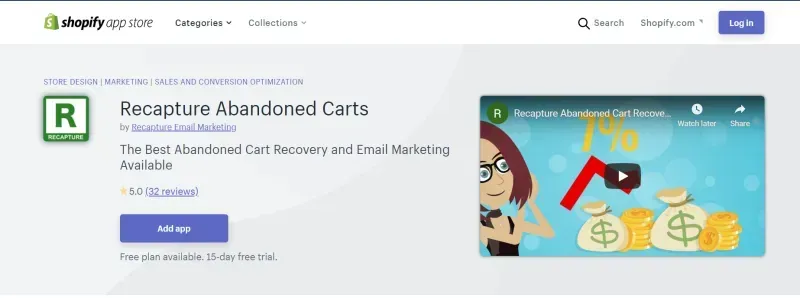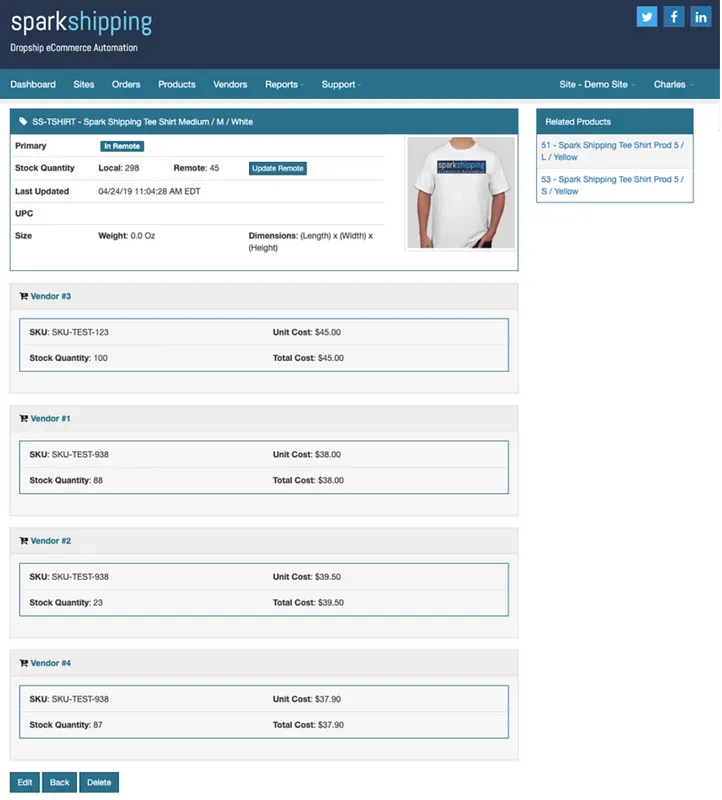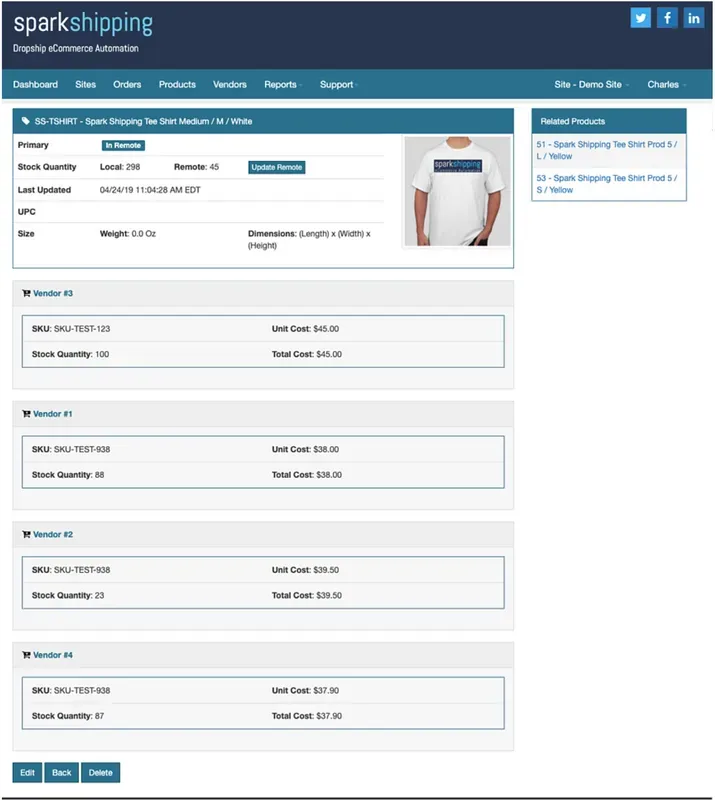Top 13 Dropshipping Automation Tools for 2024
By A Kishore Aksharthan on 2/23/2024 · 5 minute read
The eCommerce industry is challenging, prompting many newcomers to start with a dropshipping business model. Dropshipping simplifies the order fulfillment process compared to traditional methods, yet it introduces its own set of hurdles. One primary challenge in dropshipping is maintaining efficiency. As the business expands, the time spent at a computer processing orders increases significantly.
This process is not only time-consuming but can also impede the ability to scale a dropshipping business effectively. The question arises: What happens when the volume of orders exceeds the capacity for processing them? The adoption of dropshipping automation software emerges as a key solution. This technology enables a business to:
- Reduce the time spent on manual tasks
- Enhance profitability
- Minimize errors
- Scale the dropshipping business in a sustainable manner
Moreover, it gives entrepreneurs the opportunity to reclaim their time and prevent burnout.
A plethora of automated dropshipping tools are available on the market. Businesses might choose to utilize a single tool or a combination of several to automate repetitive tasks, thereby boosting both profitability and efficiency. To assist in getting started, here's a curated list of 13 preferred dropshipping automation applications.
Category One: Email Marketing

Email communication remains a pivotal method for businesses and their customers to engage, with certain messages necessitating a tailored, personal reply including inquiries, grievances, and positive reviews.
However, some routine, transactional communications are ideally suited for automation, provided the appropriate automated dropshipping tools are utilized. These automated messages can cover order confirmations, requests for feedback post-purchase, and notifications of delivery.
A selection of favored email marketing resources has been identified, aimed at facilitating these communications.
MailChimp
For those encountering email automation for the first time, beginning with a user-friendly option such as Mailchimp is advisable. It offers a cost-effective entry point, being free for the initial 2,000 subscribers, thereby representing an ideal choice for expanding a dropshipping venture. Mailchimp is adept at crafting automated emails for various purposes including welcome messages, sending tracking details, soliciting customer feedback, commemorating customer milestones, and beyond.
What makes Mailchimp particularly advantageous is its collection of ready-to-use templates, designed to streamline the creation process. Despite being considered a tool for beginners, Mailchimp is equipped with sophisticated features for automating based on dates, retargeting products, mapping customer journeys, and more.
Yet, Mailchimp is not exclusively tailored for dropshipping or eCommerce platforms. For those in need of a tool specifically engineered for recapturing abandoned shopping carts, Recapture Abandoned Carts is the suggested choice.
Recapture

Recapture stands out for its focus on reducing abandoned carts in Shopify stores. It is recognized for its simplicity, clean interface, and readiness to deploy with high-grade default settings, contributing significantly to sales recovery efforts, with over a hundred million dollars in sales salvaged to date. The templates provided are not only automatically generated and aligned with industry standards but also allow for customization, including the integration of a brand’s logos and color schemes.
Recapture also ensures that once a purchase is completed, emails regarding abandoned carts cease, thereby avoiding the risk of bombarding customers with redundant communications. Given its specialist features, Recapture is preferred for managing abandoned carts over more general email marketing solutions.
Category Two: Task Automation

Utilizing dropship automation software is a significant step towards streamlining operations, yet the process isn’t fully automated if manual intervention is still necessary to transfer information between these platforms. Task automation software enables the seamless execution of complex procedures involving multiple applications without manual oversight. For those aspiring to automate their dropshipping business, here are the top recommended task automation tools:
Favorite Tools for Automation
IFTTT
If This, Then That (IFTTT) offers the capability to create up to five app integrations at no cost, making it an excellent starting point. Additionally, there is an option for a 7-day pro trial that expands this capability to 20 connections. IFTTT is praised for its simplicity in setting up basic connections, although it’s advisable to regularly check for any glitches due to its occasional unreliability.
Zapier
For a more advanced and dependable option, Zapier stands out. Its superior capabilities allow for effortless integration between two or more applications.
Zapier, for instance, can notify a user via text every time an order is placed and automate various dropshipping tasks that surpass the capabilities of IFTTT, such as segmenting an email marketing list and collecting customer feedback.
While Zapier offers a free version restricted to 100 tasks per month, the starting plan at $19.99 per month includes 750 tasks, catering to busier periods without interruption in automation.
Shopify Flow
Shopify Flow is tailored for Shopify online store owners, facilitating the management of apps and tasks. It can interact with nearly any data point within Shopify, enabling connections between the applications used by store owners.
Shopify Flow is capable of automating tasks like creating a customer support ticket following a negative review, segmenting customers based on lifetime value, or initiating a win-back email sequence for potentially lost customers.
This tool is particularly beneficial for dropshippers due to its array of pre-built templates designed for automating common eCommerce tasks. Users also have the flexibility to create custom workflows with specific triggers, conditions, and actions, all managed through an intuitive interface that simplifies dropshipping.
Category Three: Sourcing Dropshipping Suppliers
Starting a dropshipping store is straightforward, but the challenge lies in locating reputable suppliers, as the market is flooded with low-quality products offering slim profit margins. The key to success is finding a dropshipping supplier capable of delivering high-quality service and products, thereby ensuring customer retention.
Among the plethora of available automated dropshipping tools, two standout apps for sourcing dropshipping suppliers are recommended:
SaleHoo
SaleHoo emerges as a comprehensive dropshipping solution that aids merchants in identifying trustworthy suppliers. It boasts a network exceeding 8,000 pre-vetted suppliers and provides access to a vast selection of more than 2.5 million products. This enables effortless sourcing of the required products for a dropshipping store, facilitating time and cost savings.
SaleHoo distinguishes itself with an easy-to-navigate directory, reducing the time required for market research. Additionally, the absence of minimum orders allows for flexible business growth. Merchants have the choice of domestic or international shipping and benefit from SaleHoo’s customer support. Furthermore, beginners are supported through step-by-step training.
Spocket
Spocket represents another valuable dropshipping tool that assists merchants in supplier discovery. It permits the exploration of thousands of suppliers globally, thus unlocking opportunities for profitable product sourcing.
Spocket sets itself apart by facilitating partnerships with suppliers in the US and EU, ensuring high-quality products and fast delivery for customers. It offers seamless integration with Shopify stores, enabling easy connection of dropshipping stores and orders for efficient inventory management.
Features of the Spocket app include:
- An intuitive interface
- Automatic updates for inventory and pricing
- A hassle-free return policy
- 24/7 customer support
- Customized invoicing options
These tools are designed to streamline the dropshipping business process, helping merchants efficiently manage their operations and grow their businesses.
Category Four: Product Management

Order fulfillment, manufacturer relationships, and tracking are significant aspects of product management that demand a considerable amount of time from dropshippers.
Though not every part of product management should be automated due to the necessity of a human touch, there exist a variety of automated dropshipping tools designed to save time on these critical business activities.
Here are three highly regarded options:
DSers
DSers is a dropshipping software that was initially developed exclusively for AliExpress, and since then, it has expanded to support Shopify and WooCommerce as well.
It streamlines the process for eCommerce businesses to source dropshipping products and manage their suppliers efficiently. Businesses can process orders and make bulk payments swiftly, placing hundreds of orders in just seconds.
Moreover, DSers provides order tracking updates to share with customers, ensuring they are informed about the delivery timeline of their packages.
DSers offers a free account option, albeit with limited automation features. Its advanced version, available for $20 per month, accommodates up to 10 stores with 20,000 products.
WooDropship
For those who prefer WooCommerce or WordPress, WooDropship serves as an excellent product management automation tool, allowing users to manage their entire WooCommerce online store directly from its dashboard or via a Chrome extension.
The use of WooDropship requires an exclusive partnership with AliExpress. Product details and customer orders can be automated with this ecommerce tool. on AliExpress, one can simplify the purchase process by eliminating manual data entry.
WooDropship’s free plan includes some level of automation but limits users to completing up to 10 customer orders per month. For an increased capacity of 100 orders per month, there is a subscription available for $14.99 per month.
Spark Shipping
For those not using AliExpress, Shopify, or other dropshipping platforms, Spark Shipping offers a versatile solution compatible with any vendor, supplier, or dropshipping platform. It provides an end-to-end automation platform for dropshipping and can assist with product management, inventory, order fulfillment, and tracking updates from carriers such as UPS or FedEx.
Spark Shipping allows online store owners working with multiple platforms or dropshipping suppliers to place orders effortlessly and streamline the order information, ensuring it is sent in the correct format to each supplier. This tool is particularly beneficial for businesses operating on platforms like Amazon or Magento that require access to a diverse array of dropshipping suppliers.


Category Five: Customer Service

Dropshippers often face the challenge of standing out in a market where multiple brands sell the same products. One effective strategy to differentiate a dropshipping business is by providing exceptional customer service, which rivals cannot easily replicate. Outstanding customer service not only fosters brand loyalty but also encourages repeat orders.
Investing in quality customer service tools might have an initial cost, but the return on investment through repeat business, positive word-of-mouth, and increased brand loyalty can be significant.
Highlighted below are three preferred customer service tools that can enhance the customer experience:
LiveChat
ChatBot’s LiveChat offers a platform where instant messaging is made available to customers, featuring an AI chatbot for immediate, human-like responses. This tool not only boosts response rates but also helps in reducing the volume of support tickets and emails. Features include welcoming customers, filtering spam, responding to after-hours messages, guiding through FAQs, capturing leads, and segmenting them.
Tidio
Tidio, another advanced AI chatbot, greets visitors with an automated message and a pre-chat survey. It comes with a comprehensive set of chat tools potentially more suitable for dropshipping businesses than LiveChat. Tidio can trigger messages based on various actions such as cart abandonment and time spent on the site. It also allows real-time monitoring of website visitors and tracks how it has impacted sales and user behavior.
Zendesk
Despite the efficacy of chatbots in handling basic queries, the value of human interaction in customer service cannot be overstated. For more specialized support needs, helpdesk software like Zendesk can be invaluable. Zendesk facilitates a connection between customers and live agents for each support ticket, enhancing the overall customer experience and efficiently managing email queries. It’s scalable, with costs that adjust according to the size of the business.
Each of these tools brings its own set of advantages to the table, offering unique ways to improve customer service in a dropshipping business.
Automate your Dropshipping Business Today

Understanding the various stages of the dropshipping process is crucial for prospective business owners who aim for success.
Choosing the right technology for your business can greatly impact the profitability and efficiency of dropshipping operations, distinguishing between a smoothly running business and one that struggles with low margins and high stress. Automated dropshipping software presents an opportunity to maximize efficiency, allowing business owners to save money and make the most of their time.
These thirteen automated dropshipping tools are designed to save money, time, and reduce stress, facilitating the successful scaling of dropshipping businesses.